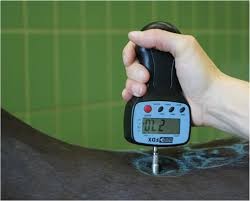
Pressure algometry and diagnostic palpation.
Pressure algometry is a technique where pressure carried out by an algometer is slowly raised until the horse offers an avoidance reaction. This point is called the mechanical nociceptive threshold (MNT). Pressure algometry is described as an objective tool to quantify musculoskeletal sensitivity or pain as well as to evaluate treatment results. This study intends to evaluate the use of pressure algometry to quantify the effect of diagnostic palpation performed by three physiotherapists.
Six sound adult warmblood horses were randomly divided into an experimental group (receiving physiotherapeutic intervention) and a control group (no intervention). Specific markers were placed on the horse’s body, and tested with the algometer by gradually increasing pressure until the horse showed a behavioural avoidance reaction. This result was recorded, and compared to the results attained by diagnostic palpation by three equestrian physiotherapists. The horses were tested in the morning and evening, and the experimental group received a physiotherapeutic intervention between testing.
The results show that the three successive pressure algometer measurements per landmark were not significantly different from each other. Furthermore, a significant agreement was found between the scores of correlation coefficients of the physiotherapists and with the objective pressure algometer measurements. To conclude, a pressure algometer proved to be a valuable tool to objectively monitor palpation by physiotherapists.
Expert opinion by Els Smet
The use of pressure algometry could potentially have a place both to quantify neck and back musculoskeletal sensitivity in horses as well as to evaluate the treatment results.
> From: De Heus et al., Journal of Equine Veterinary Science 30 (2010) 310-321. All rights reserved to Elsevier. Click here for the online summary.


